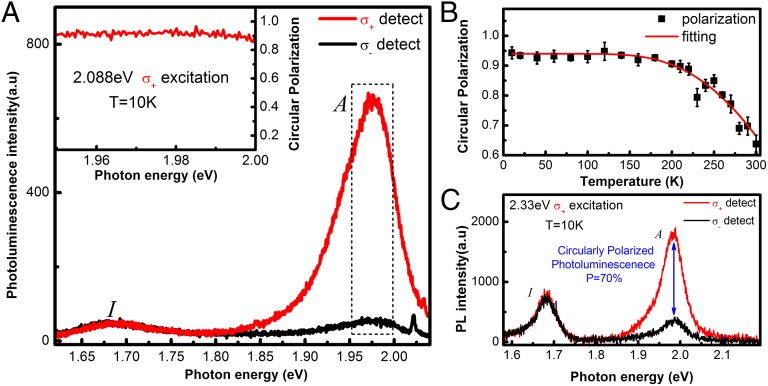Fig. 3.
Photoluminescence of bilayer WS2 under circularly polarized excitations. (A) Polarization-resolved luminescence spectra with components of σ+ (red) and σ− (black) under near-resonant σ+ excitation (2.088 eV) at 10 K. Peak A is recognized as the excitonic transition at band edge of direct gap. Peak I originates from the indirect band-gap emission, showing no polarization. Inset presents the circular polarization of the A excitonic transition around the PL peak. Opposite helicity of PL is observed under σ− excitation. (B) The degree of circular polarization as a function of temperature (black). The curve (red) is a fit following a Boltzman distribution where the intervalley scattering by phonons is assumed. (C) Photoluminescence spectrum of components of σ+ (red) and σ− (black) under off-resonance σ+ excitation (2.33 eV) at 10 K. A nonzero circular polarization P is only observed at emissions from A excitons.

